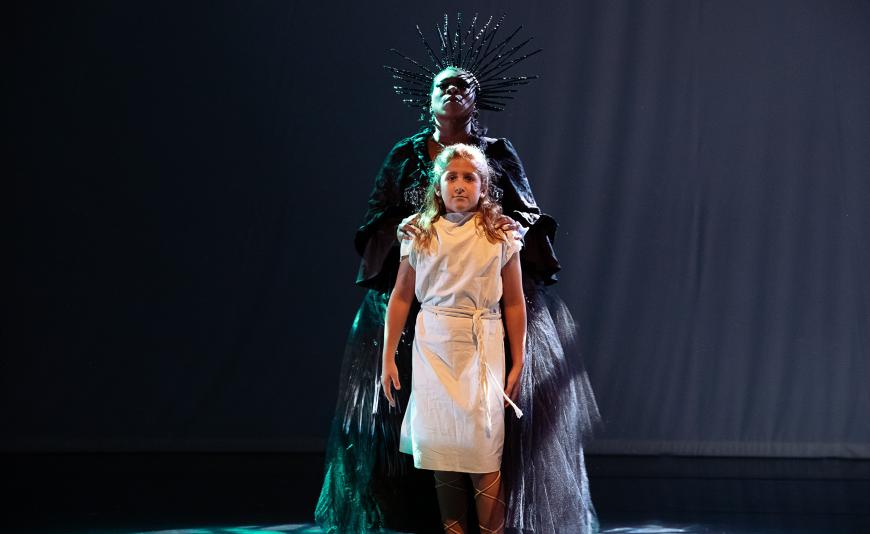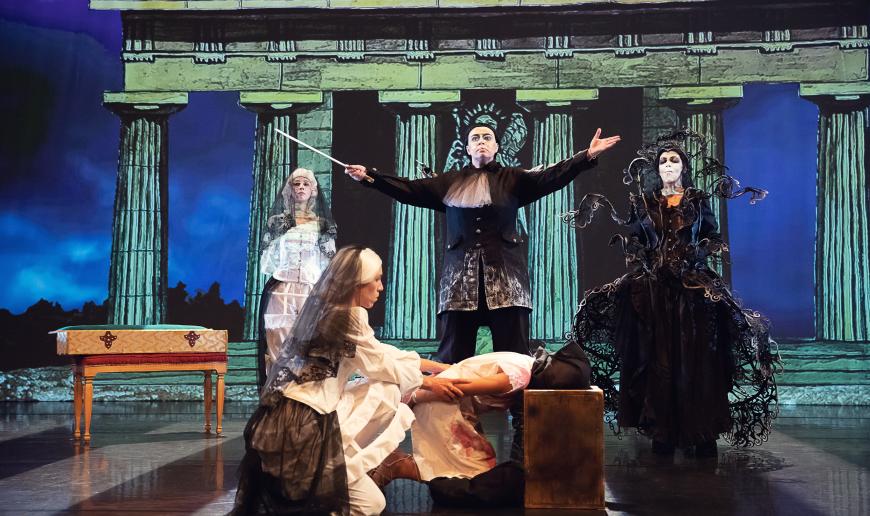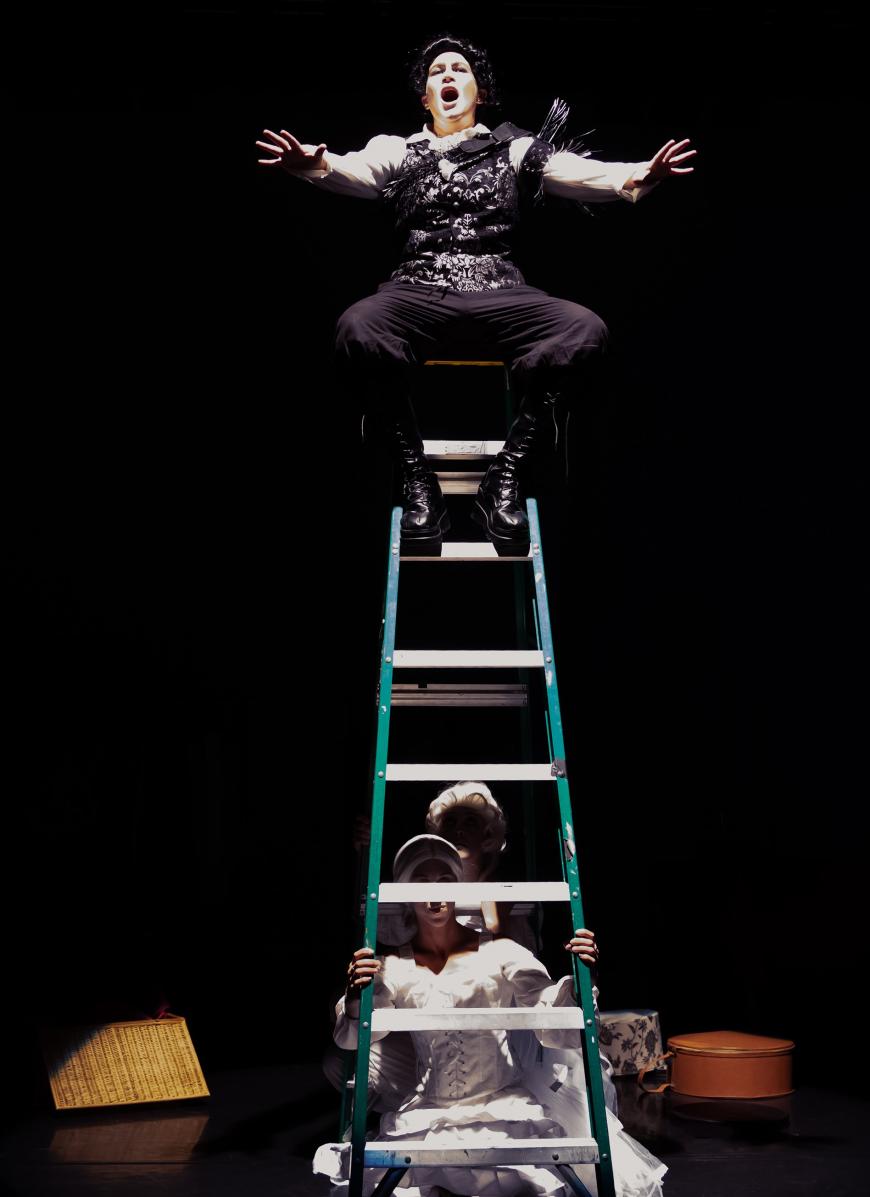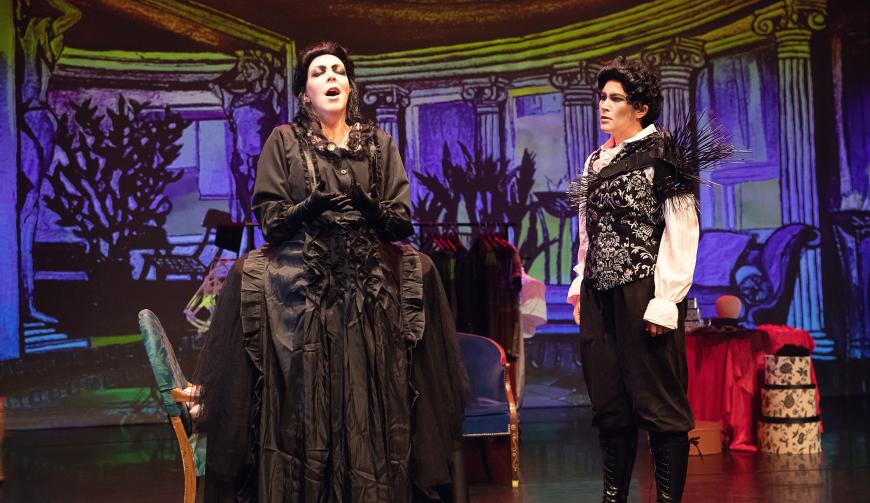
All music, we are reminded, was once new music. In the right hands, even a 300-year-old opera can feel up to date. A case in point is the brilliant new revival of Leonardo Vinci’s Astianatte by Ars Minerva, the Bay Area company that has been bringing forgotten Baroque operas to the stage since 2015.
Astianatte was a smash hit in Naples in 1725 for Vinci (who was not that other Italian, Leonardo da Vinci). The composer had written successful comic operas but was eager to make a wider reputation by turning to serious historical drama — here, a dark tale from the aftermath of the Trojan War.
Readers of the Iliad will recognize the names of the opera’s characters but may be startled at how Homer has been changed. The war is over, and Troy’s defender Hector has been slain by Achilles, now also dead. Hector’s widow Andromache and their young son Astyanax are captives (in the opera’s Italian, she is “Andromaca,” and he is “Astianatte”). The burning question of the opera is what to do with the boy, who the Greeks fear may grow up to take revenge. The Greek answer, delivered by the fierce Orestes, is to execute the child — a fate that is prevented only at the last moment.

Around this morass of political machinations swirl the love-and-honor debates dear to Baroque opera. Andromache and Orestes, swept by tugs of desire and betrayal, are caught in a web with the two other principals: Pyrrhus, whose father (Achilles) killed Hector but who is in love with Andromache, who understandably abhors her suitor; and Hermione, a Greek princess engaged to Pyrrhus but in love with Orestes.
Vinci brought to the story a music that felt new in 1725 — tuneful, fast-paced arias unburdened with counterpoint and free of Baroque weightiness. (It seems as if there is scarcely a tempo slower than allegro in the whole opera.) The voices and orchestra spend a lot of time in unison, producing a straightforward and accessible sense of the emotion.
The original Neapolitan production had included two men (including the famous castrato Farinelli), but Ars Minerva went with an all-female cast of singers, maintaining the sparkle of treble voices and imbuing the story with an intriguingly modern gender identity. (The non-singing title role was acted by young Anthony Polakoff, who endured the horrible machinations of his elders with stoic grace.)

Vinci’s energetic music came off splendidly in the hands of Ars Minerva’s excellent singers. The four leads are well known in the Bay Area from appearances with West Edge Opera, Ars Minerva, and the Merola Opera Program. Deborah Martínez Rosengaus forcefully conveyed Pyrrhus’s stern attempts to manage the complicated politics of the situation. Nikola Printz portrayed a compelling Orestes, by turns arrogant and self-doubting. Jasmine Johnson as Andromache made the most of her wide vocal range to bring out the widow/mother’s distraught and conflicted emotions, despite a rough start in her first aria on opening night. Aura Veruni made Hermione into a splendidly unpredictable and steely-sharp blade of vengeance.
Vinci’s perky music can seem inappropriate to the maelstrom of anger in these characters. Director Céline Ricci’s gripping production made this problem into an opportunity, beginning the show backstage at the theater in Naples in 1725. With the actors in 18th-century underwear and full of thespian cattiness, it was easy to remember these performers were not Greeks or Trojans but Italian virtuosos eager to please an opera-mad clientele. But as events grew ever darker, Ricci had her singers leave their theatrical identities as entertainers, donning their full costumes one by one. In the process, they assumed their vivid roles as characters in a tragic drama.
Powerful stagings increasingly brought us face-to-face with the characters’ tortured psyches—particularly Orestes, whose initial victorious arrogance cracks open in self-doubt and even madness. (Readers may remember that in Greek tragedy Orestes was haunted by the Furies after killing his mother Clytemnestra.)
The dramatic lighting design by Delayne Medoff brought out the opera’s traumatic core. As the story deepened, Marina Polakoff’s remarkable costumes grew spikes, spirals, and demented volutes, as if the characters’ inner edginess was bizarrely making its way out of their skins. At one point, those protuberances had Pyrrhus and Andromache embracing about as tenderly as two porcupines — fitting, given the traumas of their joint history.

The Baroque orchestra — onstage at ODC Theater — was expertly led from the harpsichord by Matthew Dirst with a deft sense of tempo and timing. Previous Ars Minerva productions have featured smaller bands, but here the orchestra was expanded with more string players and even two trumpets, giving Vinci’s potentially flighty tunes more tonal and melodic solidity.
Ars Minerva’s fine interpretation made this old tale of survivals and reprisals seem as fresh and engaging as today’s news — with the important reminder that in the long run there’s really nothing new under the sun.


